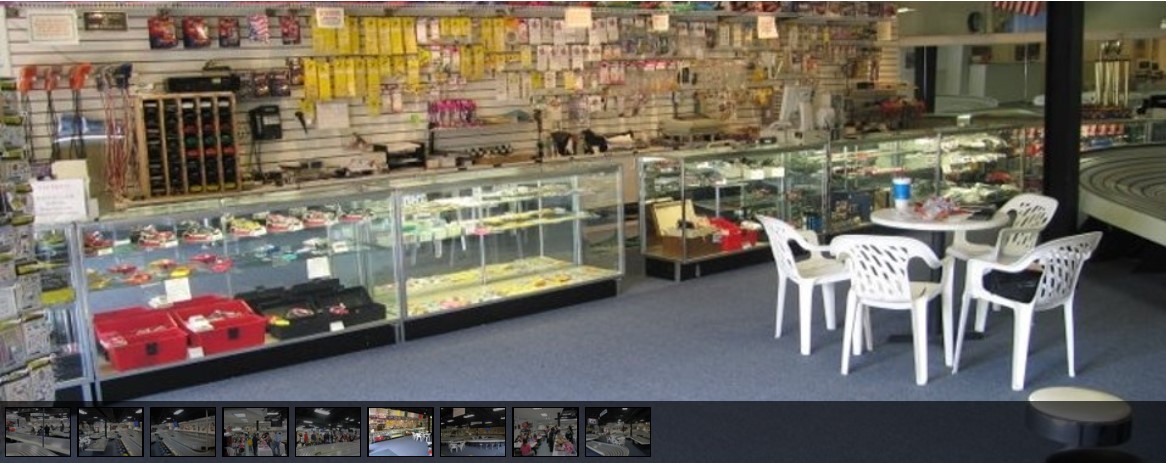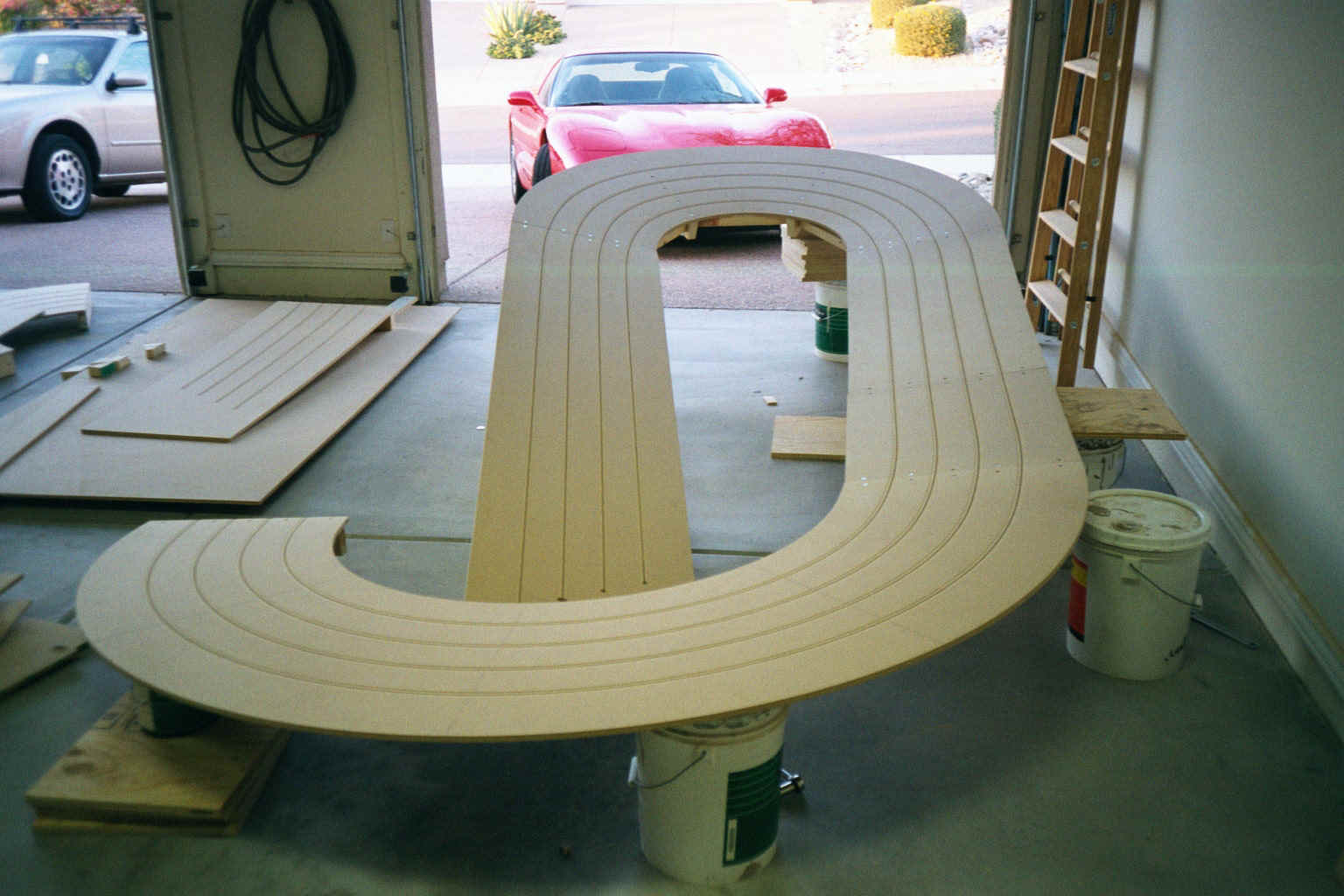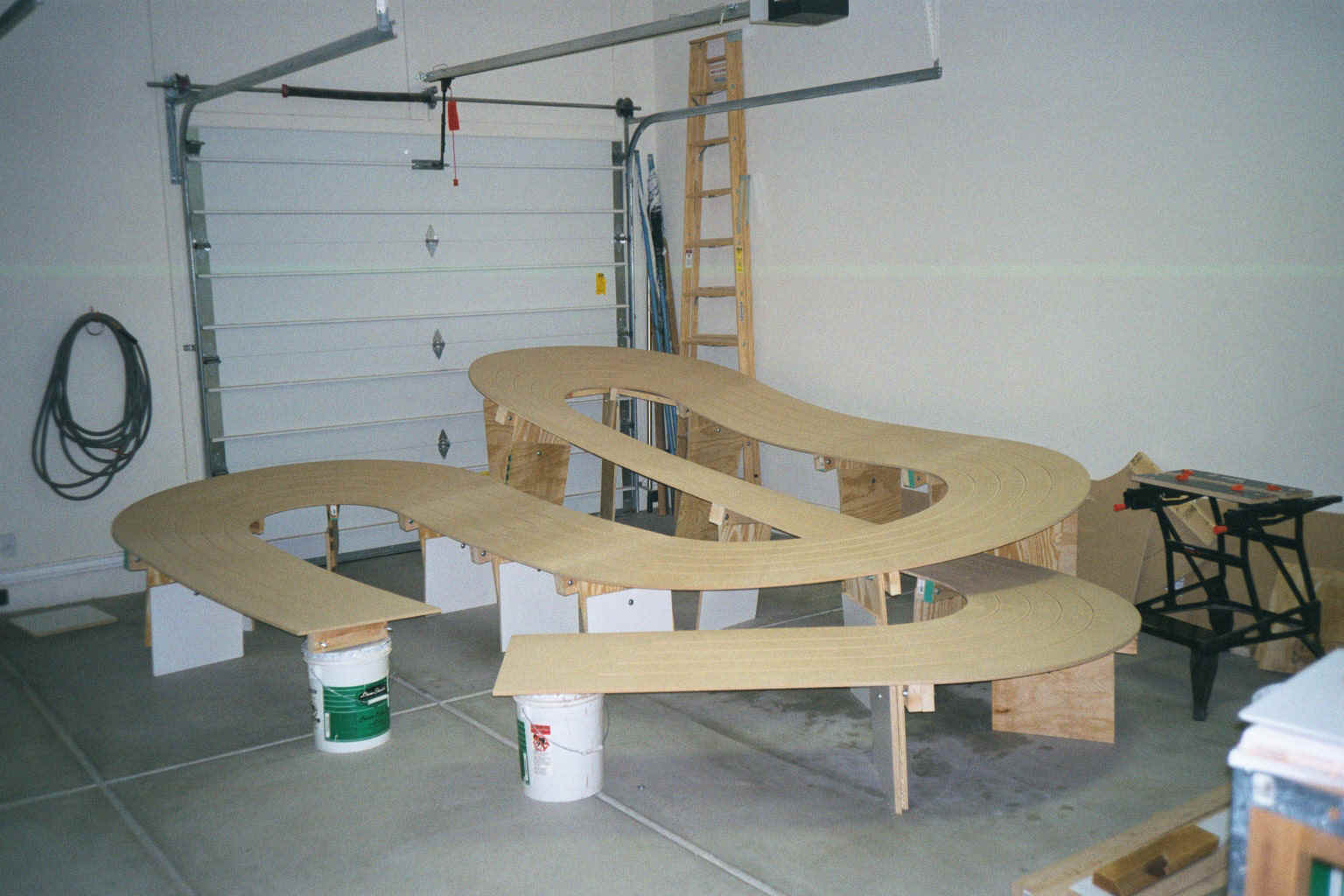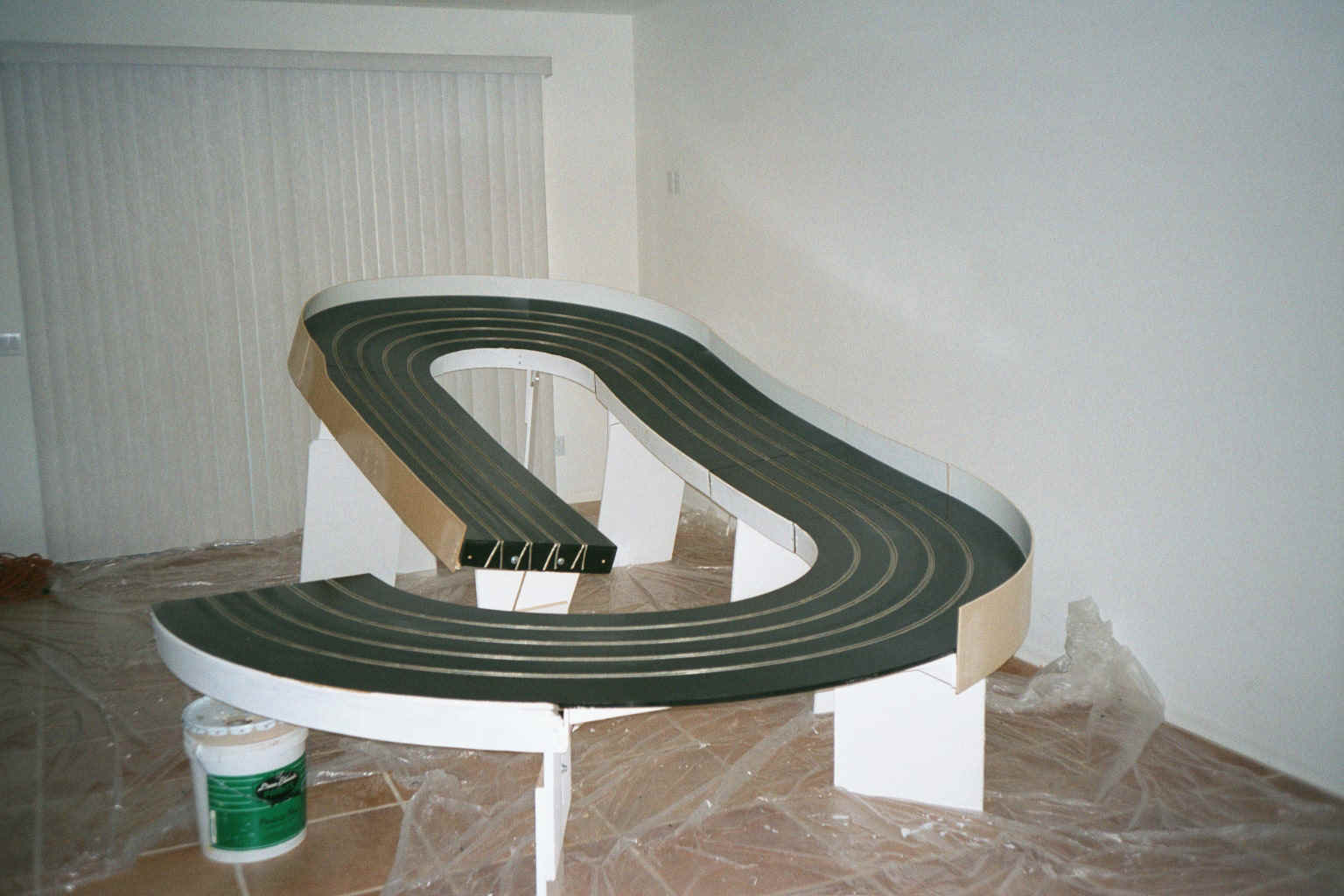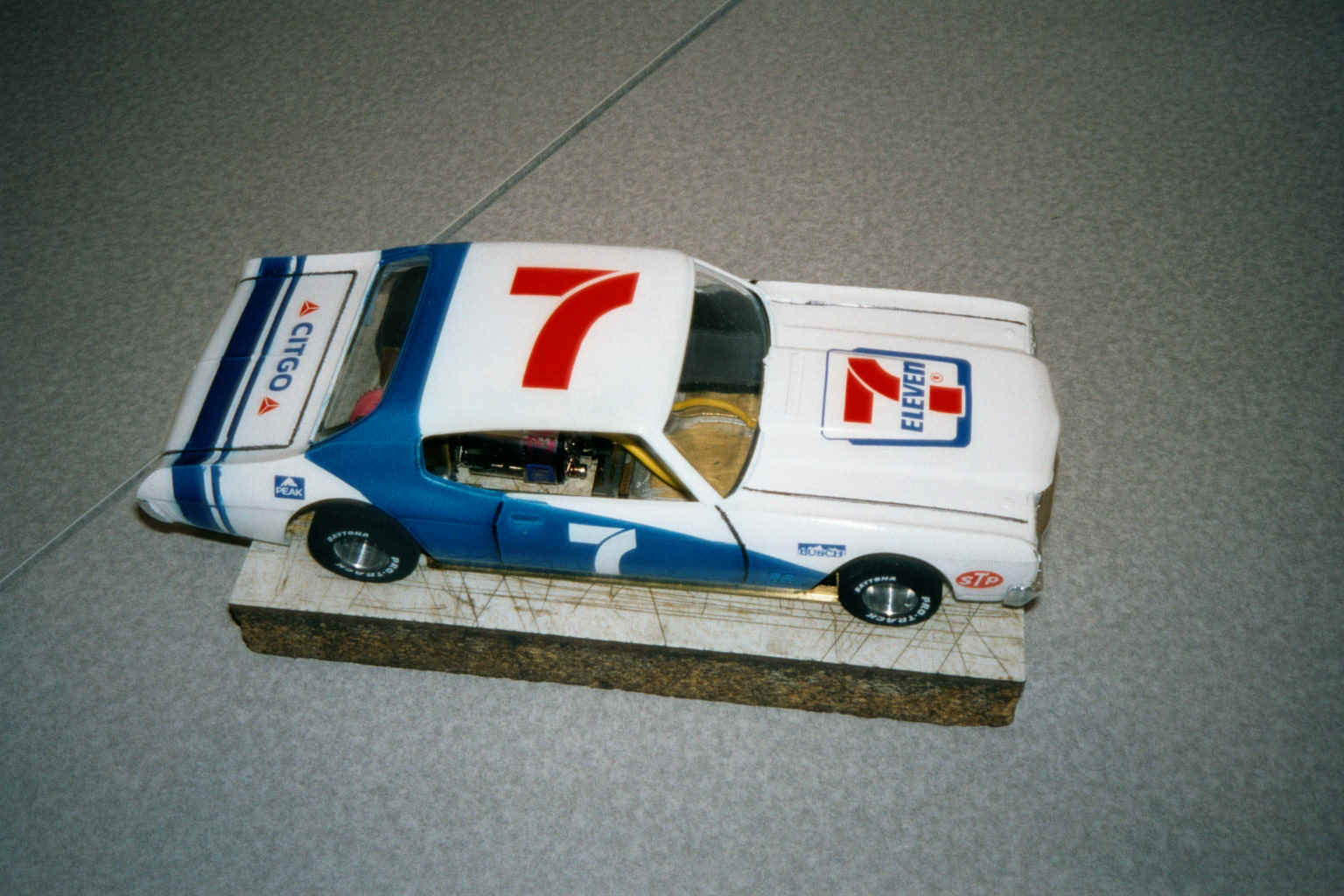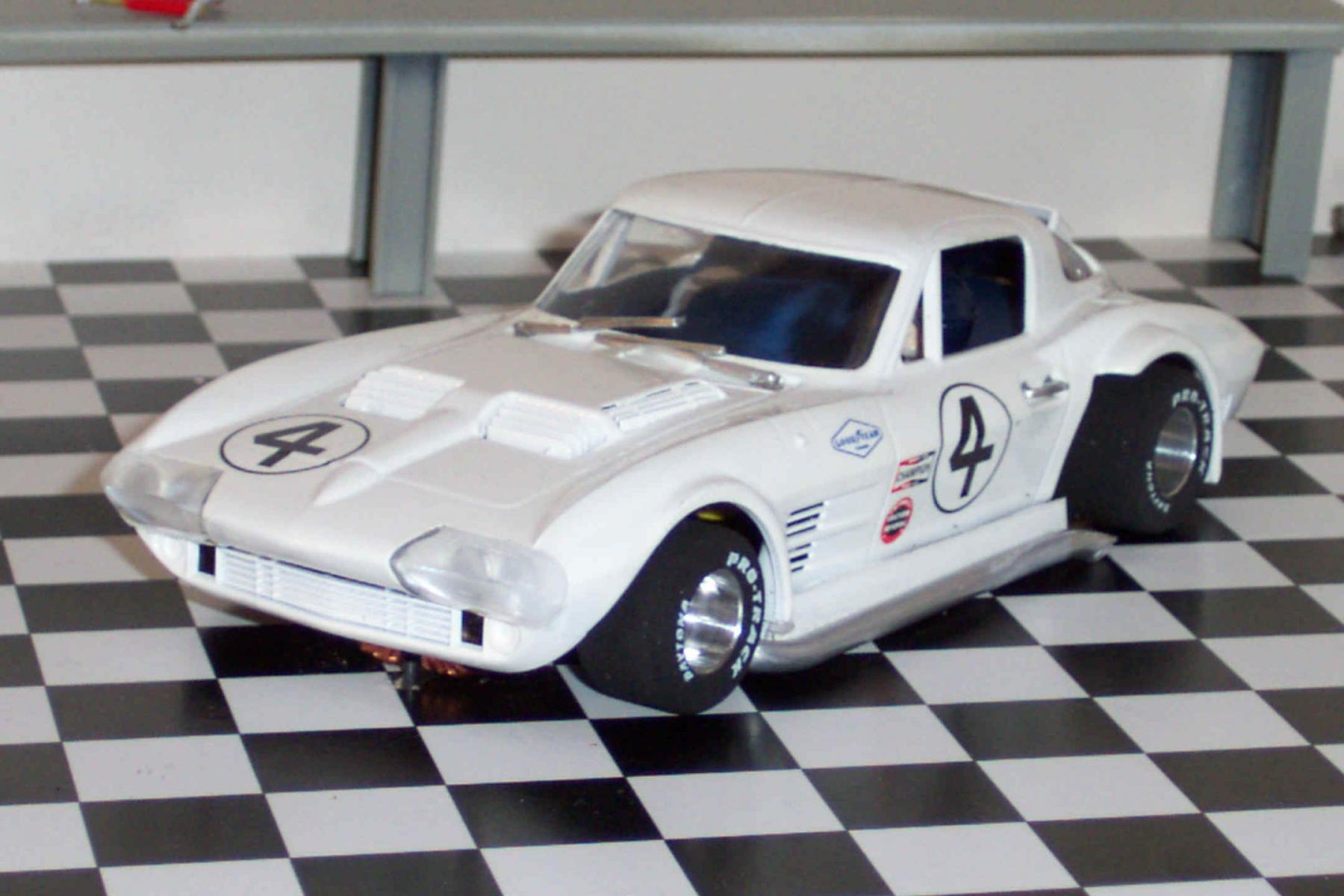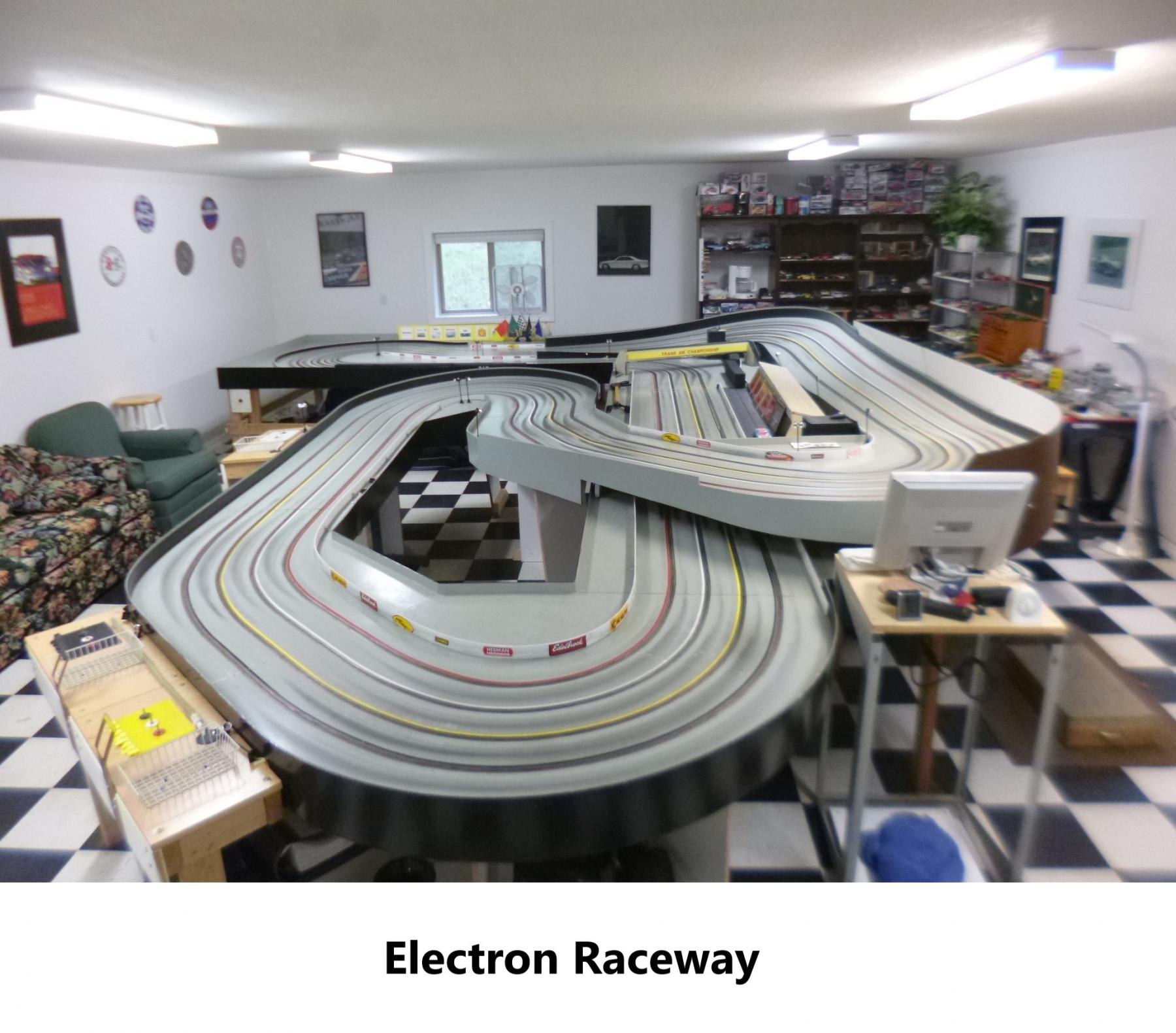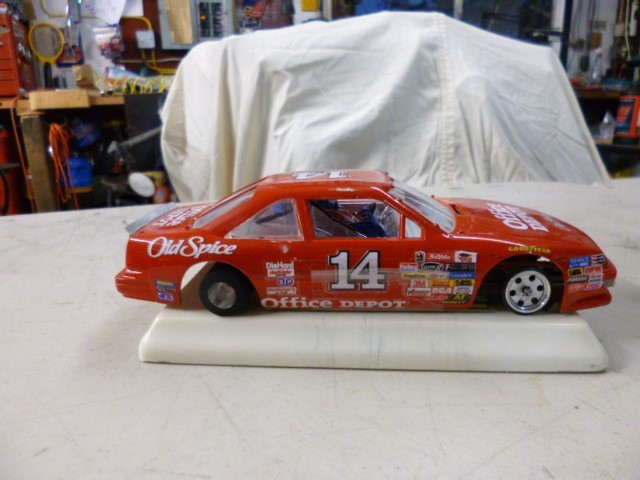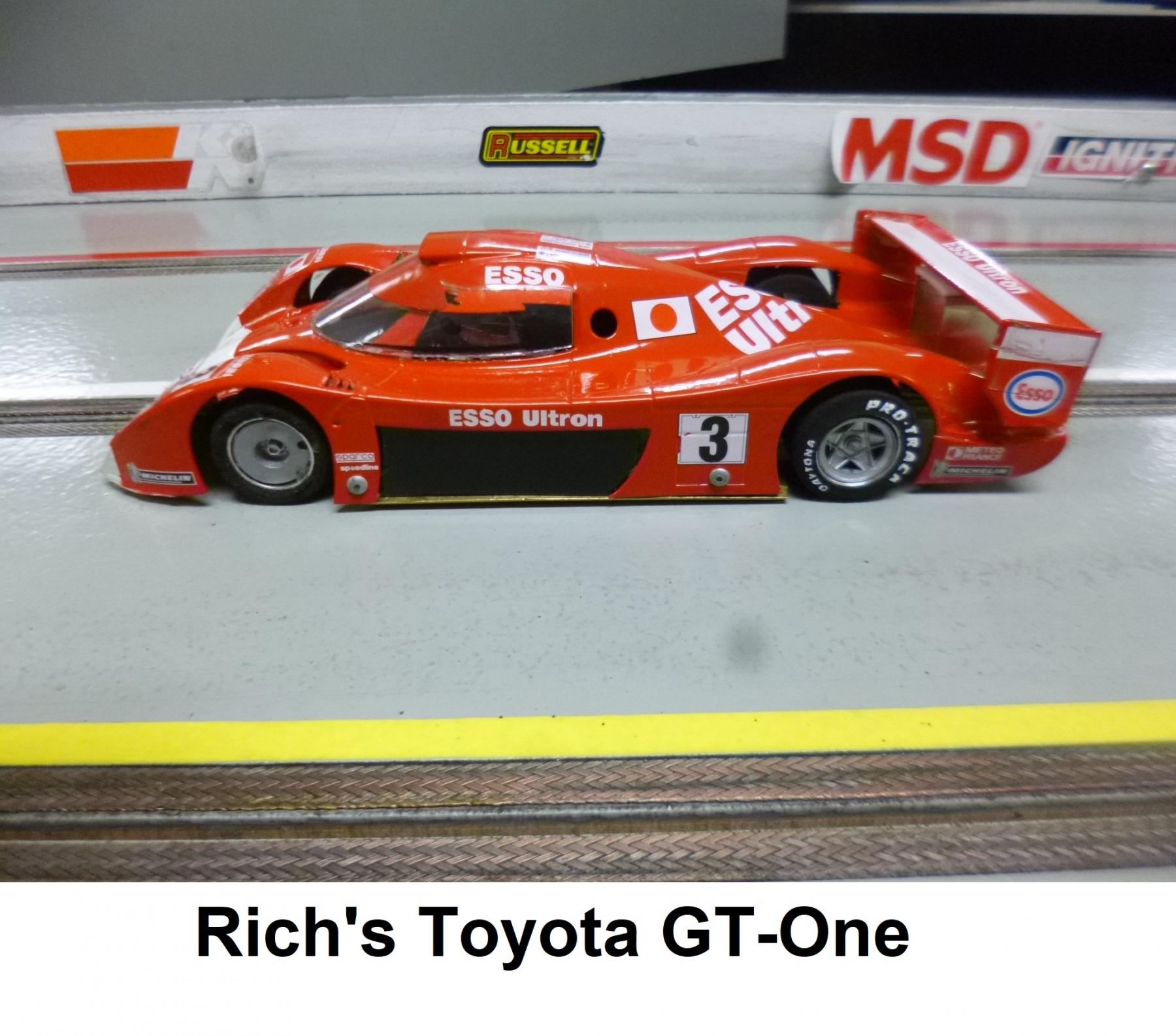Some research about an early Trans-Am contest at Electron Raceway prompted a review of images accumulated over a 20+ year period. This brought back many memories which, in turn, inspired me to author several nostalgia blogs including
- Trans-Am Rebirth Trans-Am rebirth - Electron's roving reporter - Slotblog
- Anatomy of a Charity Race Anatomy of a charity race - Electron's roving reporter - Slotblog
- OSCAR – The Halcyon Days OSCAR - the halcyon days - Electron's roving reporter - Slotblog
- Slots in High School Slots in high school - Electron's roving reporter - Slotblog
This blog will likely be my last nostalgia piece, at least for a while, and describes, in some detail, my journey. My personal attachment to model car racing dates back more than 60 years. There have been periods of my life where building a career, family and other hobbies have overshadowed my model car racing passion. Some of these dormant periods lasted a decade or more, but when time and energy have permitted, I have always returned to the hobby. I was fortunate enough to retire at 57 years old, making the past eighteen years a cavalcade of model car building, track building, racing and having great fun with the hobby. Even so, other interests strongly compete for my time and attention.
I have played and raced at several notable raceways including Elmsford Raceway, P.A. Watson’s Raceway, Rad Traxx, Buena Park, Cruzin’ Hobbies, Scale Racing Center, Slots of Fun, Action Raceway, Starlight Speedway and many others. Over the years, I have raced everything from Womps to Wing Cars to hard-body cars. Slot Car conventions were very compelling events and I attended these in 2003-2005. I posted articles about the 2004 and 2005 conventions on Slotblog. See the links below.
http://slotblog.net/...onvention-2004/
Retrospective Slot Car Convention 2005 - Electron's roving reporter - Slotblog
In addition, I am always interested in new and innovated ways of marketing the hobby. I have visited Sidewinder Raceway in the Sacramento Area and the Scale Racing Center in Tacoma, Washington. Sidewinder focused on 1/32 racing on very nicely detailed wood routed tracks with realistic scenery. Unfortunately, it is now closed. The Scale Racing Center focuses on 1/24 and 1/32 hard body cars produced by ScaleAuto, BRM and others. The center is huge and houses several tracks. See images and links below
http://slotblog.net/topic/82876-racing-at-sidewinder-13118/
ScaleRacing Center in Tacoma, WA - Electron's roving reporter - Slotblog
Still, my preference and passion lies with home/club tracks with tight turns and short straights. This type of track tests a driver’s skill and puts a premium on handling rather than sheer power. Over the years I have constructed five unique routed tracks. Design and execution have improved dramatically over time.
As far as cars are concerned, I love the realism of 1/24 scale plastic or resin bodies. There is such a wide selection that I never get tired of building painting and decaling these machines. Some are replicas of 1 to 1 racing machines while others sport fantasy liveries.
Even though I am capable of creating a scratch-built chassis, many in our club are not, and in fact do not want to take the time to hone these skills. As a result, I have migrated to using commercially available H-bracket chassis
I am not attempting to throw shade on any type of slot-car racing. All are good, and a matter of personal preference influenced, to some extent, by commercial and/or club tracks in a particular area.
I grew up in the 50s and 60s. Back then kids were car crazy. At an early age I began building the cars of my dreams from 1/24 plastic model kits. For many of my contemporaries cars were the most important topic of conversation. The car represented freedom, independence and a badge of adulthood.
I spent most of my youth in Pleasantville, New York; a sleepy little town on the New York Central line. Many residents made the commute to New York City by train each and every week day. The year was 1959 and I was 12 years old (note that the date may be off by a year; it might have been 1960). That summer, while on a shopping trip, I looked into a hobby shop window and saw a Scalextric 1/30 scale, figure eight layout with a chicane, sporting some open wheel racers of the period including a Vanwall and Lotus (see image below for similar set). Customers were encouraged to try out the circuit. The proprietor gave me a short demonstration and then turned me loose. The speed of the car was modulated with an easy to use thumb activated, plunger type controller. Wow, scale models that I could actually race. I was hooked! I pestered my parents for a “slot car Christmas” and was not disappointed. Under the tree was a 4 lane HO scale Model Motoring set (see image below for similar set and note the steering wheel speed controllers). Our large finished basement became a race venue frequented by our friends. My brother and I spent hours configuring new layouts to challenge our skills. Others brought their track sets over and we created huge race courses.
In 1960 or 61, my parents drove to Masters (a department store) in Elmsford to do some shopping. It was a store that we did not frequent and it was a bit of a drive from our home in Pleasantville. Anyway, as we were driving in, I saw a sign advertising Elmsford Raceway and asked if my folks could pick me up at the raceway after they completed their shopping. They relented. I remember that the Raceway entrance was adjacent to a bowling alley. The door led down a flight of stairs and there it was; a huge slot car center with several tracks and a well-stocked inventory of cars, parts, controllers, etc. I was particularly impressed with their largest track called the Nuvolari (it was also nicknamed the Unsinkable Molly Brown because it survived several basement floods). I recall talking to the owner, Lou del Rosario who was both attentive and knowledgeable. The place was really cool but I was not old enough to drive and I knew my parents wouldn’t be willing to make the drive to Elmsford on a regular basis, so I would have to be satisfied with my HO home racing set. I read that Elmsford Raceway closed around 2016 after 50 years of operation. What a shame. See below for images
In 1962 my focus shifted. At the age of 15, I bought a 55 Pontiac for $50 and rebuilt the 287 cubic inch V8; quite a learning experience. This began a long hiatus from the hobby with college, marriage, career and graduate school monopolizing my time.
By the time I graduated from college, the halcyon days of slot car racing were in the rear view mirror. I missed out on developing the skills of scratch building, motor building and mingling with the slot car legends. I would have to learn these skills much later.
In 1969 I went to work as an aircraft engine engineer for General Electric Aircraft Engine Division in a suburb of Cincinnati, Ohio. A few years later I discovered a commercial track near downtown Cincinnati. Still, the drive was a bit long to participate on a regular basis. Instead, I chose to build my own four-lane, table top track in the basement of our home. The design was a rough replica of the Bridgehampton, Long Island road course (see image below). With no internet or written material to use for reference, I was clueless but pressed ahead anyway. The table had a footprint of about 16x8 feet and was built with particle board (what a mistake). I borrowed a router and soon found that the particle board was extremely hard to cut. After breaking several bits, I gave up on this concept. After giving the project some consideration, I came up with the idea of “skinning” the table with 3/16 inch hardboard. Slots were then cut into the hardboard. I used copper tape to transmit power. Voila, the four lane slot car track came to life. Unfortunately, I have no images of this track to share; however, a schematic is shown below. I purchased several REH Co. 1/32 chassis. These were topped by some realistic Lexan bodies including a Porsche 917 and an Alfa T33 (surfing the internet, I found a few images of this chassis and bodies that are shown below). Much time was spent painting and detailing bodies, playing and racing with friends and neighbors.
The year was 1976. I was 29 years old and getting bored designing insignificant small parts for jet engines. With the help of a friend and former co-worker, I secured a position with an independent producer/refiner/marketer in a booming oil business and moved to the Fort Worth, Texas area. My hobby went into remission for several years while I focused on my new career. When things began to settle down, I started racing at a commercial track called Starlight Speedway. We raced Flexi cars, Group 12 and Group 15 among other classes. I also decided to build a track in the garage of our Arlington, Texas home. This track was a two-lane, table top model built on 5/8 inch plywood. This time I used commercial braid as the conductor. The track footprint was 20x6 with a 4x4 L at one end. I had so much fun playing, building and racing the little machines either by myself or with neighbors and friends. Unfortunately, I do not have images of this track but have included the schematic shown below.
Working in the energy industry afforded many opportunities and in the early 90s I moved to the San Francisco bay area of California to work for a large independent refiner/marketer. The company treated me well and I was transferred several times between the bay area and the headquarters in Stamford, Connecticut. While in Stamford, I decided to make a visit to Elmsford Raceway. Again, I talked to Lou who told me that organized flexi races were held on a weekly basis (Wednesdays, I think) on their extended figure eight track. I was interested and attended several races doing well enough for podium finishes. Lou had an interesting way of dealing with cheating. The rules for the flexi race indicated that any racer could challenge the winner. The winner would then have to sell his winning car (less the body) for the price of a new flexi car.
Even though I enjoyed racing at Elmsford, I was very busy at work and was traveling for business a great deal so my time for slot cars was limited. After our company made a large acquisition, we moved to Scottsdale Arizona. Another hiatus ensued for several years.
Circa 2000, I started racing again at Cruzin’ in Mesa and then in Chandler Arizona (Bob Scott’s tracks). I also decided it was time to build a home track in our Fountain Hills townhouse. I did quite a bit of research on the internet and found several sources of track building information. One of the sites I found and that inspired me was authored by Larry Geddes. The information still exists and has been moved to Old Weird Hearld. See the links below.
https://oldweirdherald.com/2014/03/25/building-the-j-l-raceway-part-1/
https://oldweirdherald.com/2014/03/25/building-the-j-l-raceway-part-2/
I was determined that this track would be built like a commercial track using elliptical routing. This required that I build several jigs. I designed and built a four lane free standing track in the loft of our Fountain Hills Townhouse. I used MDF as the base material and used Magnatech braid because I thought I might run some 1/32 cars. Below are a few images of the build including a schematic. If I was building a track today I would refer to the excellent piece written by track building legend Steve Ogilvie. See the link and then click on Steve’s tutorial. Also pinned is a post entitled Building and Maintaining Slot Car Tracks started by “Cheater”. This post provides a link to Chris Frost’s excellent piece. Chris not only explains the building process but makes some really great suggestions on creating a viable track design, which suggests best practices and flags potential pit falls. See the link below
http://slotblog.net/forum/9-general-technical-info-advice/
About this same time, I began corresponding with a hard-body chassis builder in Oregon and purchased several chassis. The design is rather simple with no hinges. The side pans “rattle” (move side to side) on the center section. These cars were dubbed by the builder, Bob Hanna, as Econos. These cars handled quite well on short, tight tracks and I loved the look of the plastic model kits mounted on a chassis with scale wheels. See images below of the original cars.
At that time, we also owned a condo in Prescott, Arizona and spent quite a bit of time there. I remembered reading about a high school technology teacher that built a track at his school and formed a club. This article inspired the organization of PASA (Prescott Area Slot-car Association). A club track was built at Prescott High School and the club was a modest success operating for several years (see image of the track below). I posted an article about the club on Slotblog entitled “High School Slot Racing” (see the link shown near the beginning of the article for more details).
In 2004, we retired and moved to Roseburg, Oregon. Before we left, I sold the Fountain Hills track. The club at the High School continued for several years after I left. With full retirement came the opportunity to devote much more time to the hobby. In Roseburg, I joined a club where we raced hard-body cars with custom brass and wire chassis. We race on a very tight and difficult track (see image below)
Shortly after joining, I came up with the idea of a charity race to be held at a local mall. I posted a piece on Slotblog entitled “Anatomy of a Charity Race” (For more information on this race follow the link shown near the beginning of this article). Below are a few images recorded at the race.
When we moved to Roseburg, it was always my plan to have space for a good sized slot track. We were lucky enough to find a five acre lot with an existing 2,400 square foot shop. Within the shop, I built a 1,000 square foot finished room complete with a propane heater and a half bath. This room houses my track and workout facilities. The track was completed in 2005 and has been active ever since. See images below.
At first we raced the very same OSCAR spec cars as our sister track (STR). I was never happy with the look of these cars with scale model bodies and small wheels (see images below for example)
A club in Portland, Oregon had migrated to scale wheeled classes featuring Scholer H-bracket chassis. Soon after, I purchased and tried one out. The handling was quite good (not quite as good as the OSCAR cars) and the look was great! At that point I started to transition from OSCAR spec cars to H-bracket classes. A couple of examples are shown below. Although the Scholer chassis is no longer available there are other H-bracket alternatives including, 2NASTE, Plafit, Slotting + and Scale Auto which are all “legal” for True Scale classes.
For images of cars in all H-bracket classes see the link and then click on the desired class
http://slotblog.net/...aceway-classes/
My raceway, like many others was shut down during the Covid pandemic. Racing with my slot car buddies was curtailed for more than a year. After completing many home projects, I was getting bored. I always liked the GT40 Mk IV so I ordered a 1/24 resin body from Europe. The body was too thick and fragile to use as it was, so I decided to explore molding and casting it in resin. I ended up casting several for my own personal use (See images below). I also posted an article on the subject on SlotBlog. See the link below
http://slotblog.net/...ting-a-journey/
Below are a few images.
The project was such a success that I decided to mold and cast a Cobra Daytona. In 1 to 1 scale, the Daytona is quite small, so instead of casting in 1/24, I decided to mold and cast the car in 1/20 scale. In this size the bodies fit our True Scale Trans-Am or True Scale Sports Car chassis perfectly. See below for a few images of a few of the finished cars.
For the time being the saga goes on. I know that at some point we will not be able to maintain the property and will be forced to move into much smaller quarters. I may not have room for a track and might have to settle for racing at the club tracks of others or commercial facilities. Until then, the fun continues.















